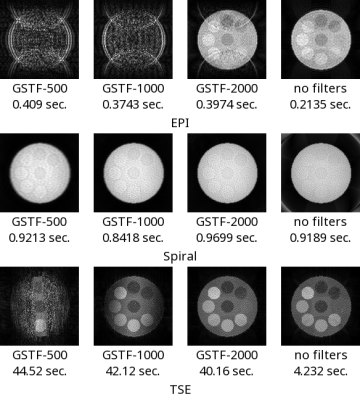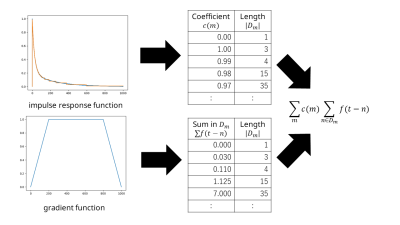Hidenori Takeshima1
1Advanced Technology Research Department, Research and Development Center, Canon Medical Systems Corporation, Kanagawa, Japan
1Advanced Technology Research Department, Research and Development Center, Canon Medical Systems Corporation, Kanagawa, Japan
A new
representation of the gradient system transfer function is proposed. The
proposed method can process arbitrary gradient functions as a sum of finite
impulse response filters in acceptable computational time.

Figure 5. The
reconstructed images and processing times for GSTF-500, GSTF-1000, GSTF-2000,
and no filters. The images were reconstructed using a gridding algorithm of the
corrected k-space trajectory. While tested sequences could be corrected with sequence-specific
calibrations, no additional corrections were applied for demonstration purpose.
The processing times for EPIs and TSEs were increased because the precision of
Bloch simulation was increased to 1 microsecond by applying functions of the GSTF.

Figure 1. Basic
concept of the proposed method. The proposed method represents the GSTF as a
set of coefficients which are multiplied by integral signals. The proposed
representation of the GSTF approximates a step response function as a set of
piecewise linear functions. Since only both ends of signals are accessed on an
update operation of an integral signal, computational complexity of the
proposed method can be significantly lower than a standard FIR filter.
